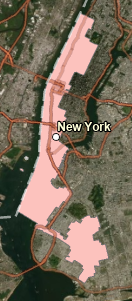Lab 5 [GIS6105]: Tessellation
The final map I created in this lab includes some preliminary analysis of the differences in average dissolved oxygen levels as a side-by-side comparison for January 2014 versus February 2014. In this example I used graduated symbols colored red (dangerous level), yellow (warning level), and green (acceptable level). This provides visual cues on areas within Bayou Texar that may be at risk for water quality issues. A tessellated surface for this feature would be very useful to show the scope of the impact of the change in values from the northern to southern regions of this waterway. For example, for the results from January 2014, the tessellated cells colored near the northernmost site could provide guidance on how far in this area community groups could explore for potential contributing causes.
Tessellated surfaces would also be beneficial for examining temperature-related data for this case study, as well as other environmental impact case studies where water temperature/quality impacts specific species (e.g., juvenile fish nurseries, mosquito habitats, etc.). In the case of mosquito monitoring, if certain water temperature/quality metrics impact breeding conditions or attract specific species, the tessellated surface could be used as guide for particular cells best-suited for surveillance and/or proactive control measures. Similarly, agricultural-based case studies could benefit from this type of analysis when examining soil conditions across a field or when assessing the impacts of chemical leaching into nearby water sources from insecticides or fertilizers. In each of these cases, values displayed within the tessellated cells could help direct the placement of additional monitoring equipment.




Comments
Post a Comment